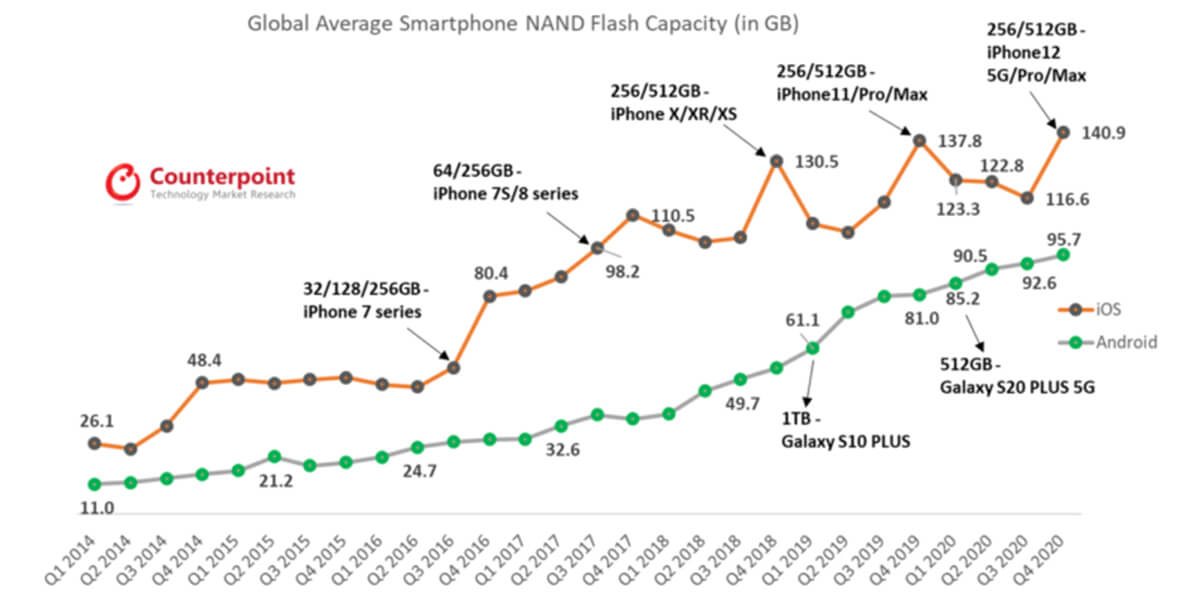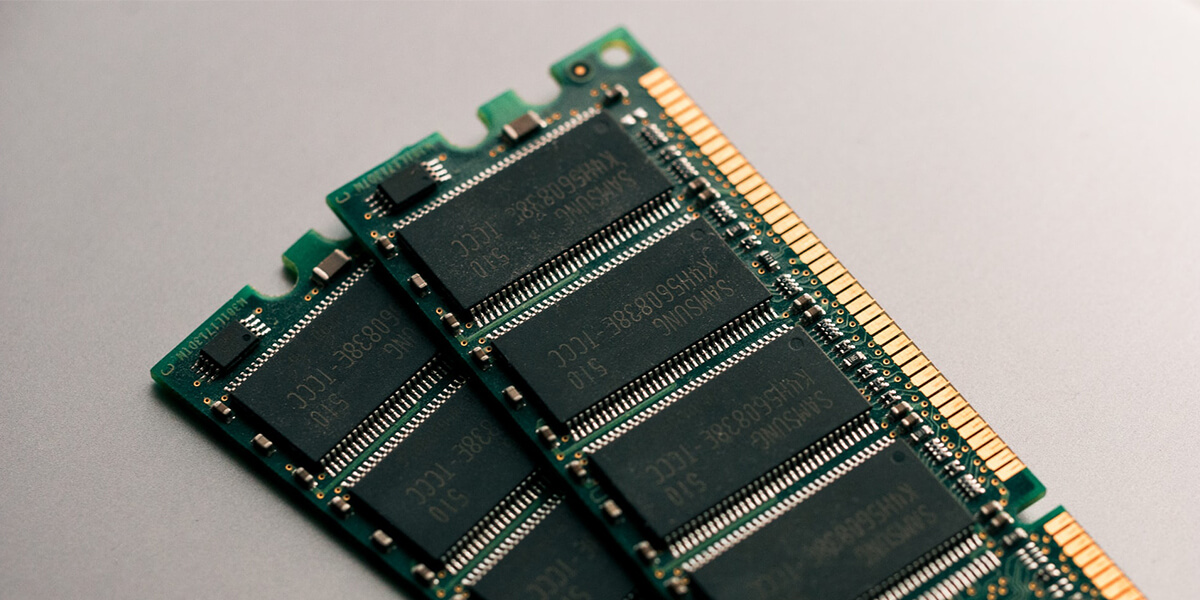NAND flash memory capacity has become one of the most important considerations for consumers when buying a new smartphone. Advances in cameras, application processors (AP), and displays have stimulated increased storage requirements for video, image, and other multimedia applications. Thus, NAND capacity has shown significant growth in smartphones. According to Counterpoint''s latest report on smartphone memory, the average capacity of smartphone NAND flash memory in 2020 has exceeded the 100GB mark for the first time.
But it is different in iOS and Android phones. The average NAND capacity of iOS phones reached 140.9GB in the fourth quarter of 2020, while the average capacity of Android phones during the same period was 95.7GB. As shown in the figure below, the average capacity of Android phones has been increasing in the past few years. In 2020, the average capacity of iOS and Android phones increased by 5.6% and 20.5%, respectively.

Comparison of the average capacity of NAND flash memory in global iOS and Android smartphones
On the one hand, the data shows that Apple did not innovate in storage scale but chose to use the most extensive 512GB NAND, which is its highest storage capacity since 2018. On the other hand, Samsung, the largest Android OEM manufacturer, launched the Samsung Galaxy S10 Plus with 1TB NAND in 2019. All these led to iOS''s storage growth rate in 2020 being lower than Android''s.
According to Q1-Q4 mobile phone sales tracking data from 2019 to 2020, the capacity of NAND flash memory in smartphones has increased by an average of 20.3%, from 80.7GB in 2019 to 97.11GB in 2020. Yet, iOS''s growth rate in 2020 is 5.6%, which is much lower than the 20.5% growth rate of non-iOS devices. The difference in average capacity between iOS and non-iOS devices is continuing to shrink. The gap between the two groups was approximately 45.2GB in the fourth quarter of 2020, which was lower than the 56.8GB in the fourth quarter of 2019.
Although NAND prices continued to decline during 2019-2020, the sales share of iOS''s high-capacity models (256GB and 512GB) did not increase during the same period. The proportion of high capacity in the fourth quarter of 2020 is approximately 21.5%, which is even lower than the 27.2% in the fourth quarter of 2019. The average capacity of iOS has reached nearly 130GB. For ordinary consumers, 128-256GB is already very high during the life cycle of the iPhone. In the fourth quarter of 2020, the demand for the 512GB iPhone is about 3.7%.
We have also observed that high-capacity (256GB+512GB+1024GB) flash storage in non-iOS smartphones is similarly equipped. The proportion of high capacity in the fourth quarter of 2020 is about 7.5%, only slightly higher than the 6.3% in the fourth quarter of 2019. But the proportion of 128GB of non-iOS smartphones rose from 26.2% in the fourth quarter of 2019 to 39.0% in the fourth quarter of 2020, showing that 128GB is the basic standard mid-to-high-end mobile phones.







